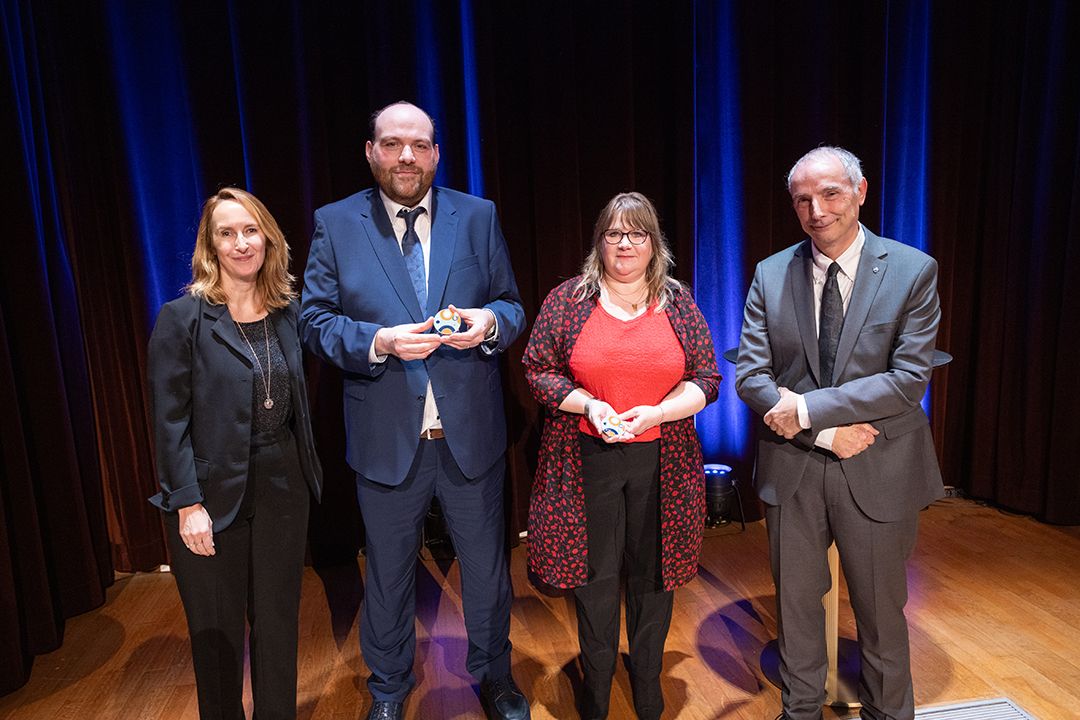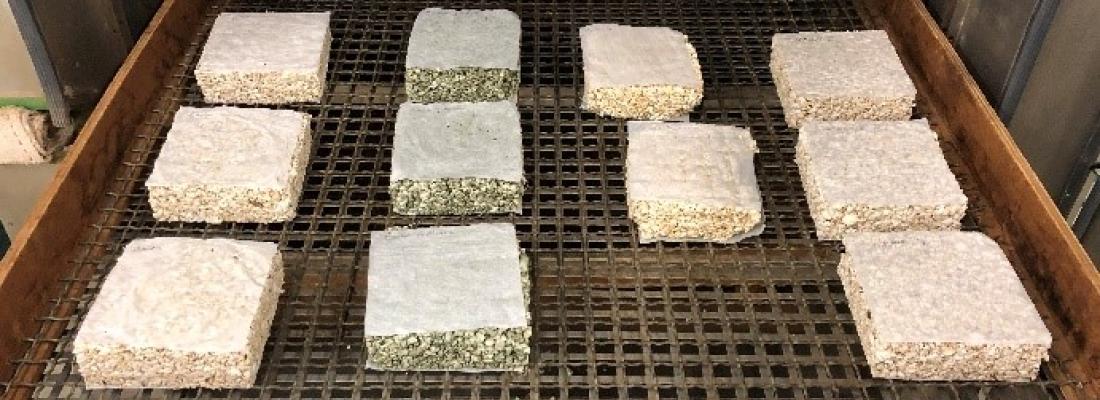To reduce the use of synthetic materials in the manufacture of acoustic panels, scientists from the agro-industrial chemistry laboratory (LCA - Toulouse INP/INRAE) and the Toulouse biotechnology institute (INSA/INRAE/CNRS) of the INRAE Occitanie-Toulouse center, have turned their attention to the pith found inside sunflower stems. This material makes it possible to produce panels that are not only effective at absorbing noise, but also have a much lower environmental impact.
Published February 15, 2024
To reduce noise reverberation in interior spaces, acoustic insulation panels are installed on ceilings and partitions. The LCA and TBI laboratories have developed panels from sunflower stem pith and analyzed their life cycle. The results are published in the journal Journal of Cleaner Production.
The researchers found that the pith of sunflower stems had insulating properties (thermal and acoustic) and could therefore play a role in the transition to a low-carbon fossil fuel economy.
Biobased materials and binders
The scientists worked from the pith, found in the central part of the sunflower stem. They succeeded in shaping it into cohesive, machinable panels. Two formulations with natural binders were successfully tested: with starch or chitosan, a derivative of crustacean shells.
By measuring absorption coefficients, the properties of sunflower pith-based panels were compared with those of melamine foam and cork panels. They represent an interesting option, particularly the starch-based formulation. At low frequencies, these panels show absorption coefficients almost 10 times higher than existing industrial panels.
Lower environmental impact
Once the acoustic benefits had been validated, the teams analyzed the life cycle of sunflower pith-based panels, to study their environmental impact. In particular, there was the question of the depletion of the carbon stock with stems that were harvested instead of being reintegrated into the soil. Based on a 4-hectare plot in the Camargue, an analysis was carried out integrating soil carbon dynamics.
Compared with marketed alternatives, these panels show an environmental advantage in 6 of the 9 impact categories assessed. In particular, replacing melamine foam boards with the sunflower pith-based formulation reduces climate change impacts by 50-70%. However, panels using chitosan as a binder have a poorer environmental profile due to the use of chemicals to extract the molecules of interest. "Pith-based panels using starch as a binder seem to be a good alternative both in terms of sound absorption performance and lower environmental impact", appreciates Lorie Hamelin, researcher at TBI.
A more detailed analysis of the harvesting process showed that emissions linked to diesel combustion by agricultural machinery were responsible for the main impacts. Environmental efficiency could be improved by increasing the quantity of stalks harvested per pass, or by adapting combine harvesters to harvest stalks and seeds in a single pass. This is provided that the depletion of organic carbon in the soil is avoided, for example by planting a vegetation cover that would be shredded and reintegrated into the soil.
References
Alejandra Gomez-Campos, Caroline Sablayrolles, Lorie Hamelin, Antoine Rouilly, Philippe Evon, Claire Vialle, Towards fossil-carbon free buildings: Production and environmental performance of innovative sound absorbing panels made from sunflower straw, Journal of Cleaner Production, Volume 400, 2023, 136620 https://doi.org/10.1016/j.jclepro.2023.136620
Contacts
Lorie Hamelin
Chercheure INRAE
lorie.hamelin@insa-toulouse.fr
Claire Vialle
Enseignante-chercheuse LCA
claire.vialle@ipst-cnam.fr






